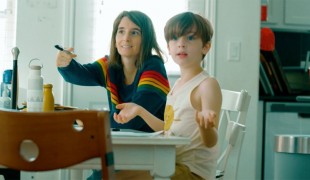- 3262
- 161
- 9
- 6
- 0
- Help Ukraine
About the solution
Easton is a wheelchair user but he uses switches and he is gaining the ability to do more.
“I have a five-year-old son with cerebral palsy and in the last five years, I have said “I know someone could make this a million times. The one thing that is a constant “wish he had” would be switch operated remote of some sort. I just want him to be able to turn channels between preselected stations so that he can make the choice of what he watches. I have researched this and spoken to multiple IT tech companies but this never seems to be something someone can figure out how to do”, Easton’s mother explained to the charity May We Help (an organisation that develops gadgets to increase the autonomy level of disabled people).
So Dave Barringer and Hannah Mattingly volunteers from May We Help, built Easton a switch operated TV remote. They used the following material: Arduino NanoLED (850 nm, Infrared), Resistor (180 ohm ¼ Watt), Diodes (3 - 1N4001 or equivalent), Relay (5V low current, Magnecraft W172DIP-5 or equivalent), Push Buttons (All Electronics LPS-5Bor equivalent ), a 9V battery and a battery clip.
The boy got the device in 2015.
“I can not thank you enough! Easton has changed the channel on me twice already this evening. I can never explain how much it means to me that you gave him the chance to be an ornery little boy. He is loving "picking" on his sisters and me already. I will try to attach photos so that you can see the excitement in his face as he is being a total boy in a house full of girls”, said his mother.
Adapted from: https://bit.ly/2MF6khU
https://www.youtube.com/watch?v=elt-DNxux1s
This solution shall not include mention to the use of drugs, chemicals or biologicals (including food); invasive devices; offensive, commercial or inherently dangerous content. This solution was not medically validated. Proceed with caution! If you have any doubts, please consult with a health professional.
DISCLAIMER: This story was written by someone who is not the author of the solution, therefore please be advised that, although it was written with the utmost respect for the innovation and the innovator, there can be some incorrect statements. If you find any errors please contact the patient Innovation team via info@patient-innovation.com
-
-
226
-
0
-
3629

Dad combines devices to help disabled child use computers
COMMUNICATION: Communicating, whether by speaking, listening, or other means
Playing
Cerebral Palsy
Assistive Technology access
AI algorithm
Restoring mobility
Promoting self-management
Managing Neurological Disorders
Promoting inclusivity and social integration
Improving Speech and Communication
Preventing (Vaccination, Protection, Falls, Research/Mapping)
Raise awareness
Child and Adolescent Psychiatry
General and Family Medicine
Neurology
Pediatrics
Canada
-
-
-
534
-
0
-
12898

Proloquo2Go – App to help people communicate
CAREGIVING
COMMUNICATION: Communicating, whether by speaking, listening, or other means
Social interaction
Paralysis
Autism
Cerebral Palsy
Brain Stroke
Brain Injury (Abscess, Brain Barrier Defect, Brain Contusion, Brain Hemorrhage, Brain Edema)
Assistive Daily Life Device (to help ADL)
Assistive Technology access
App (Including when connected with wearable)
Tremors
Muscle cramps or spasms
Difficulty coordinating movements
Muscle weakness
Difficulty speaking or understanding speech
Trouble with fine motor skills (e.g., writing, buttoning clothes)
Twitching or involuntary movements (myoclonus)
Acquired language impairment (Aphasia)
Promoting self-management
Managing Neurological Disorders
Building Supportive Community Relationships
Promoting inclusivity and social integration
Improving Speech and Communication
Caregiving Support
Clinical Pathology
Medical Genetics
Neurology
Pediatrics
Rheumatology
Netherlands
-
-
-
69
-
0
-
656

Mother Eileen Lamb implemented a series of voice assistant-driven strategies to support her raising her two autistic children.
COMMUNICATION: Communicating, whether by speaking, listening, or other means
CAREGIVING
Social interaction
(SELF)-CARE: GROOMING: Personal grooming, such as combing hair or shaving
Autism
Strategy/Tip
AI algorithm
Promoting self-management
Managing Neurological Disorders
Promoting inclusivity and social integration
Improving Speech and Communication
To improve Treatment/Therapy
Preventing (Vaccination, Protection, Falls, Research/Mapping)
Caregiving Support
Child and Adolescent Psychiatry
General and Family Medicine
Neurology
Pediatrics
United States
-
 en
en